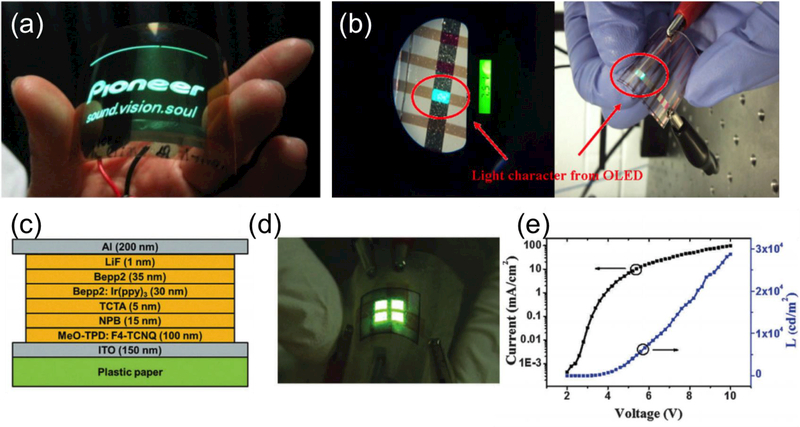Figure 8.
(a) A picture showing an operation of an OLED based on a flexible and transparent cellulose nanocomposite with low coefficient of thermal expansion. Reproduced with permission.[123] Copyright 2009, Elsevier Ltd. (b) A picture showing an OLED on bacterial cellulose nanocomposite. The fabricated OLED can emit light even when it is bent. Reproduced with permission.[124] Copyright 2011, Elsevier B.V. (c–e) The OLED on plastic-paper hybrid substrate. (c) Schematic showing the layer information of the device. (d) The OLED atop plastic-paper hybrid substrate operates well when it is bent, confirming its shape stability and flexibility. (e) Current and light output efficiency are determined as a function of operation voltage. Reproduced with permission.[42] Copyright 2016, The Royal Society of Chemistry.

